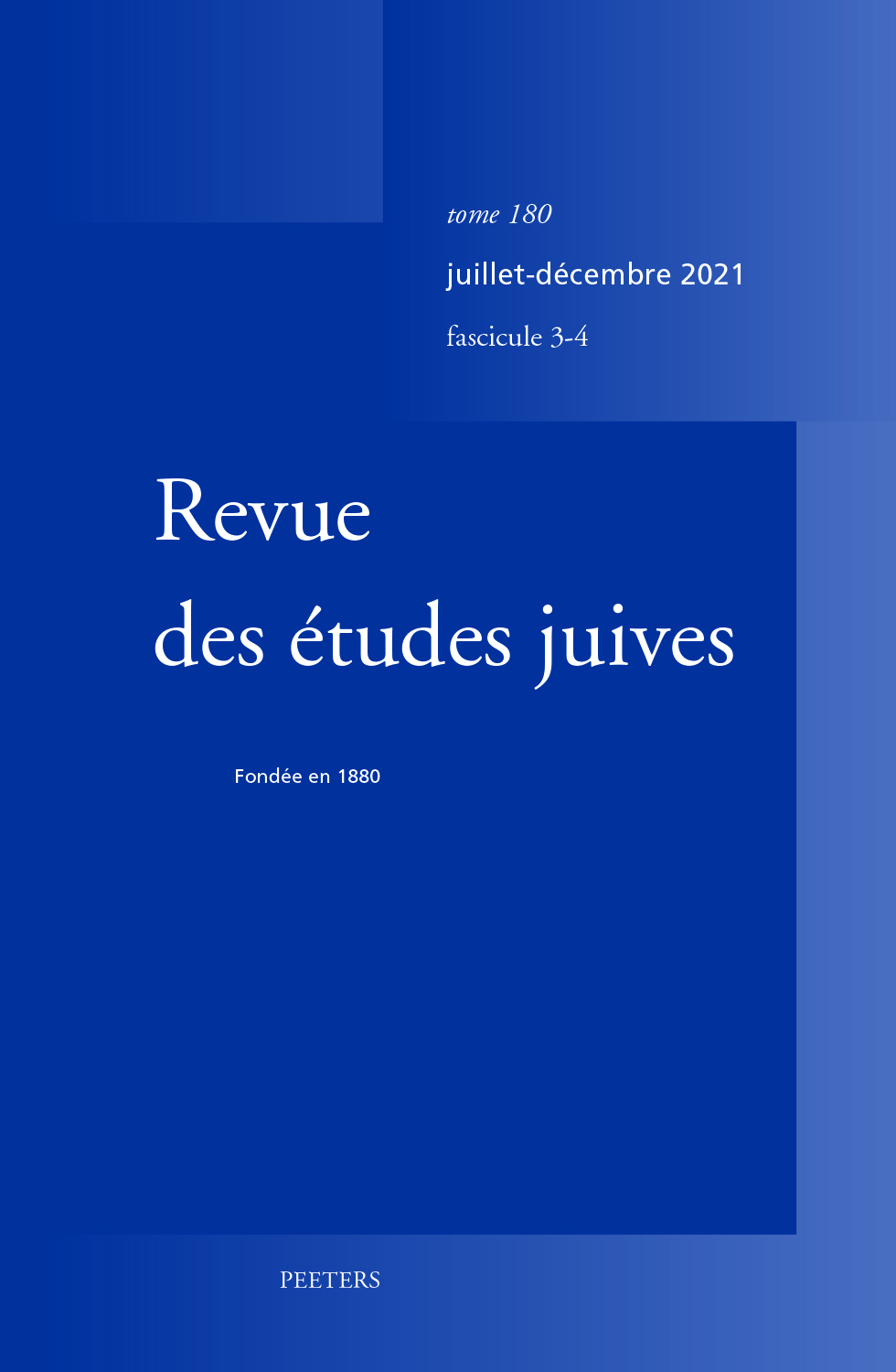 previous article in this issue previous article in this issue | next article in this issue  |

Preview first page |
Document Details : Title: La source originale de la traduction de La Sepmaine par Francisco [Ioseph] de Cáceres Subtitle: Le manuscrit Cod. Hebr. 204 f de la Staats- und Universitätsbibliothek Hamburg Author(s): PANCORBO, Fernando J. Journal: Revue des Études Juives Volume: 180 Issue: 3-4 Date: juillet-décembre 2021 Pages: 323-356 DOI: 10.2143/REJ.180.3.3290061 Abstract : Parmi les différentes traductions réalisées par Francisco [Ioseph] de Cáceres, une se démarque particulièrement: la traduction espagnole du poème écrit par le huguenot Guillaume de Salluste du Bartas, La Sepmaine (1578). Il en existe deux versions: la première vise un public chrétien (le frontispice falsifié indique «à Anvers, chez la veuve et les héritiers de Pedro Bellero, 1612»), et la deuxième est destinée à un lectorat juif, celui des «nuevos judíos» d’Amsterdam. Ces deux versions furent toutes deux imprimées à Amsterdam en 1612 chez Albert Boumeester. La seconde version, celle dont il est question dans cette étude, a été censurée par le traducteur lui-même (en prose) afin d’atténuer tous les éléments de l’original français qui portaient atteinte aux préceptes de la religion juive. Elle repose sur un manuscrit, le Cod. Hebr. 204 f de la Bibliothèque nationale et universitaire d’Hambourg. Notre article propose une étude de ce manuscrit et des différents aspects de la censure opérée par Cáceres. Among the various translations made by Francisco [Ioseph] de Cáceres, the one he made of the poem by the Huguenot Guillaume de Salluste du Bartas, La Sepmaine (1578), is particularly noteworthy. There are two publications: one dedicated to a Christian public (the frontispiece, forged, reads 'printed in Antwerp, in the house of the widow and heirs of Pedro Bellero, 1612'), and the other focused on the Jewish readers of Cáceres’ milieu, both printed in 1612 in the house of Albert Boumeester. The second, which is the one that interests us here, was subject to the censorship that the translator himself carried out (in prose) in order to mitigate all those elements in the French original that were against the Jewish religion. In this article I offer the manuscript on which the printing was made, the copy Cod. Hebr. 204 f of the National and University Library of Hamburg, and I study the application of the censorship criteria. |
|


